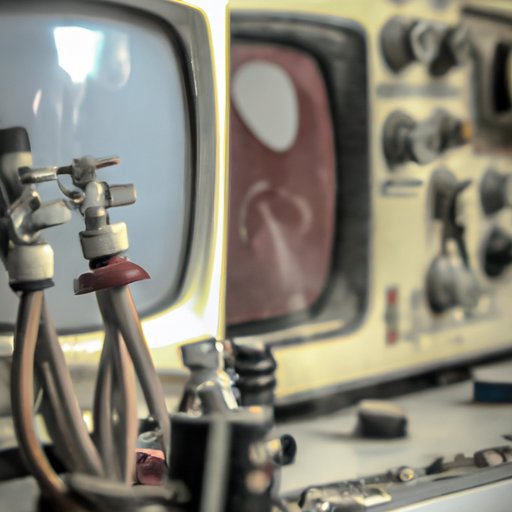Introduction
The 1950s were an era of great technological advancement. The development of the first commercial computer, the invention of the transistor, and the launch of the first satellite, Sputnik 1, are just some of the major breakthroughs that occurred during this decade. These advances not only changed the way we lived our lives but also laid the groundwork for many of the technologies we use today.
The First Commercial Computer
The history of computing dates back to the 1940s when the first electronic computers, such as ENIAC, were developed. However, it wasn’t until 1951 that the first commercial computer, the UNIVAC I, was released. This computer was the first of its kind and was capable of storing up to 5,000 words in memory. It was used primarily by businesses and government agencies for data processing, accounting, and other tasks.
The UNIVAC I marked a significant milestone in the development of computers. It paved the way for the development of larger, more powerful computers and ushered in the era of digital computing. As noted by the Computer History Museum, the UNIVAC I “helped to usher in the modern information age”.
The Development of Transistors
In 1947, Bell Labs invented the first transistor. This tiny device replaced the bulky vacuum tubes that were used in earlier computers and allowed for the development of smaller, faster, and more reliable computers. According to IBM, transistors “enabled the development of miniaturized electronic devices, from pocket calculators to personal computers”.
Transistors had a huge impact on the development of computers and other electronic devices. Not only did they allow for the development of smaller and more efficient computers, but they also enabled the development of the integrated circuit, which is the basis for all modern computers.

The Invention of the Microwave Oven
The invention of the microwave oven revolutionized home cooking. This device was invented in 1946 by Percy Spencer, an engineer at Raytheon. He noticed that a candy bar in his pocket had melted after being exposed to radar waves. This prompted him to experiment with microwaves and eventually develop the first commercial microwave oven in 1955.
The invention of the microwave oven made it easier and faster to prepare food. It also opened up new possibilities for cooking, such as defrosting and reheating leftovers. According to the National Museum of American History, the microwave oven “changed the way Americans cooked and ate”.
The Creation of the First Nuclear Power Plant
Nuclear power is a form of energy that is produced by splitting atoms. This process releases a large amount of energy and can be used to generate electricity. In 1951, the first nuclear power plant, Calder Hall, was opened in England. This power plant was the first of its kind and provided electricity to the local area.
The development of nuclear power had a huge impact on energy production. Not only did it provide a clean and efficient source of energy, but it also helped to reduce dependence on fossil fuels. As noted by the World Nuclear Association, nuclear power “has played a major role in providing reliable and clean electricity around the world”.

The Launch of Sputnik 1
The launch of Sputnik 1 in 1957 marked the beginning of the space race between the United States and the Soviet Union. This artificial satellite was the first of its kind and orbited the Earth every 96 minutes. Its launch sparked a new interest in space exploration and spurred the development of satellites for communication and navigation.
Satellites have had a major impact on communication. They enable us to transmit signals across long distances, making it possible for us to communicate with people around the world. As noted by NASA, satellites “have revolutionized the way we communicate and live”.

The Development of the TV Remote Control
In 1956, Zenith released the first commercial TV remote control. This device allowed users to change channels and adjust the volume without having to get up from their seats. This innovation eliminated the need for manual channel changing and made watching TV much more convenient.
The invention of the TV remote control had a huge impact on convenience. It made television viewing more enjoyable and allowed people to watch TV from the comfort of their own homes. As noted by the Smithsonian Institute, the TV remote control “revolutionized the way we watch television”.
Conclusion
The 1950s saw a host of major technological breakthroughs that had a lasting impact on modern society. From the first commercial computer to the invention of the TV remote control, these advances changed the way we live our lives and revolutionized the world of technology. As we look back on this era, we can see how these inventions continue to shape our lives today.
(Note: Is this article not meeting your expectations? Do you have knowledge or insights to share? Unlock new opportunities and expand your reach by joining our authors team. Click Registration to join us and share your expertise with our readers.)
